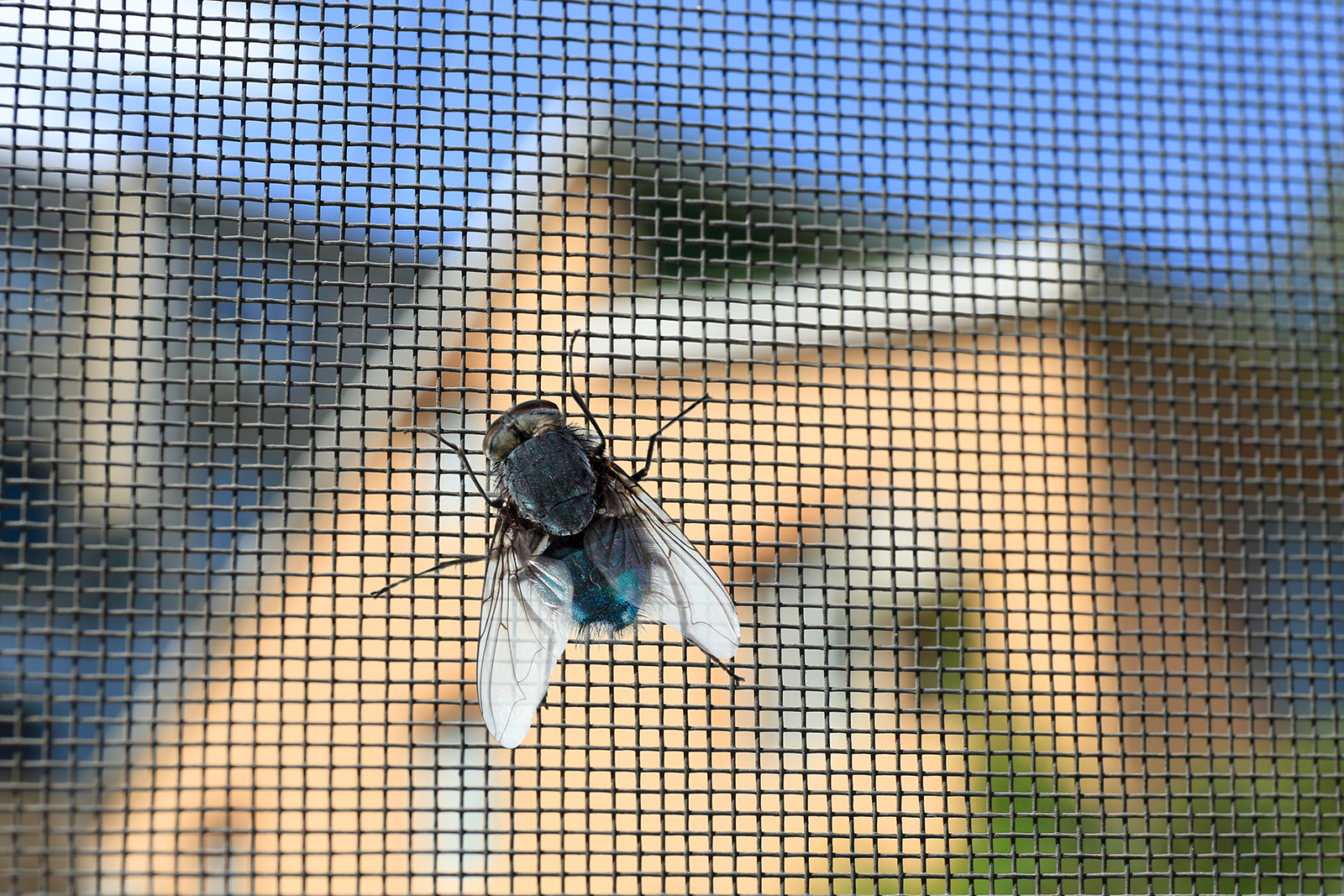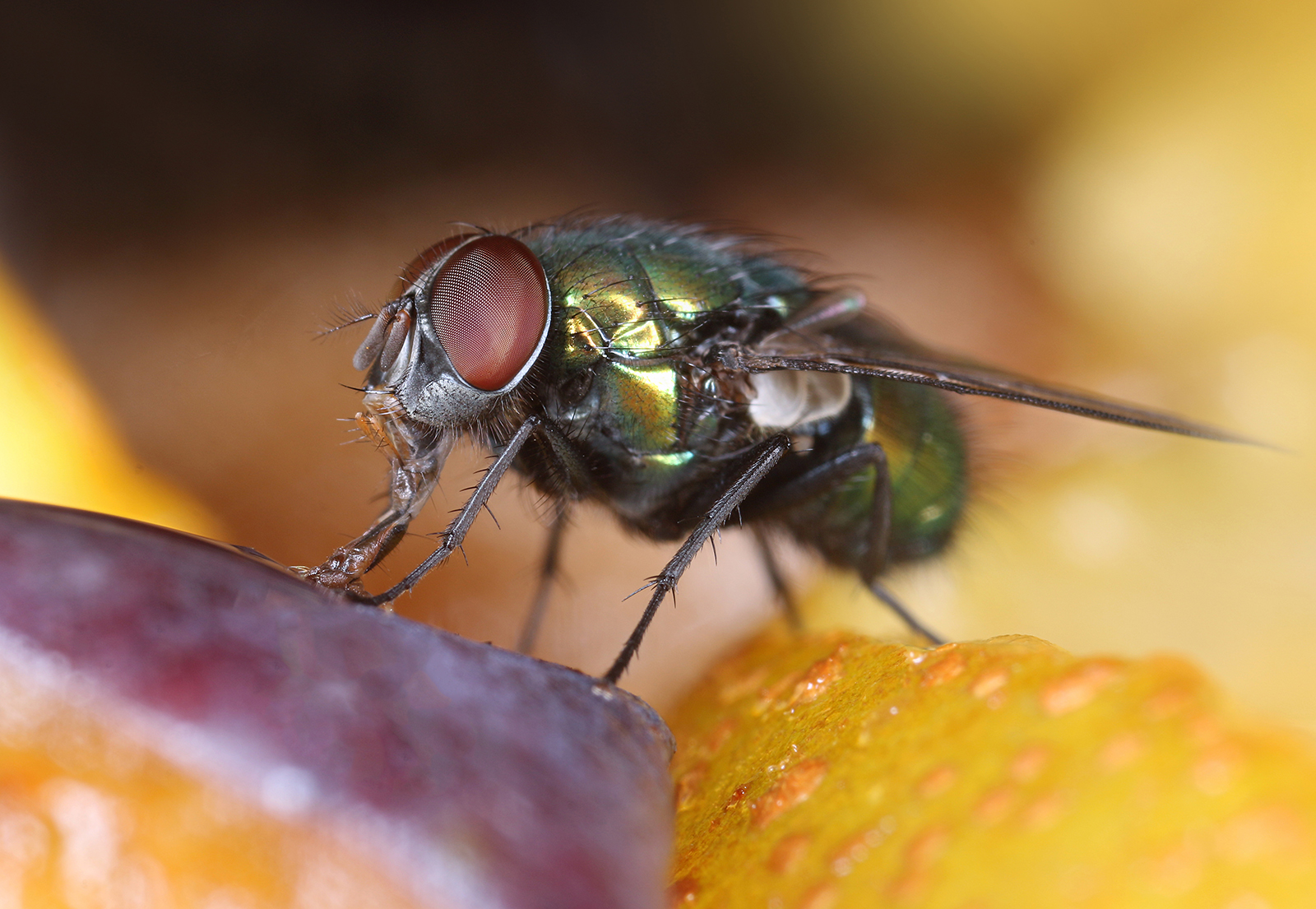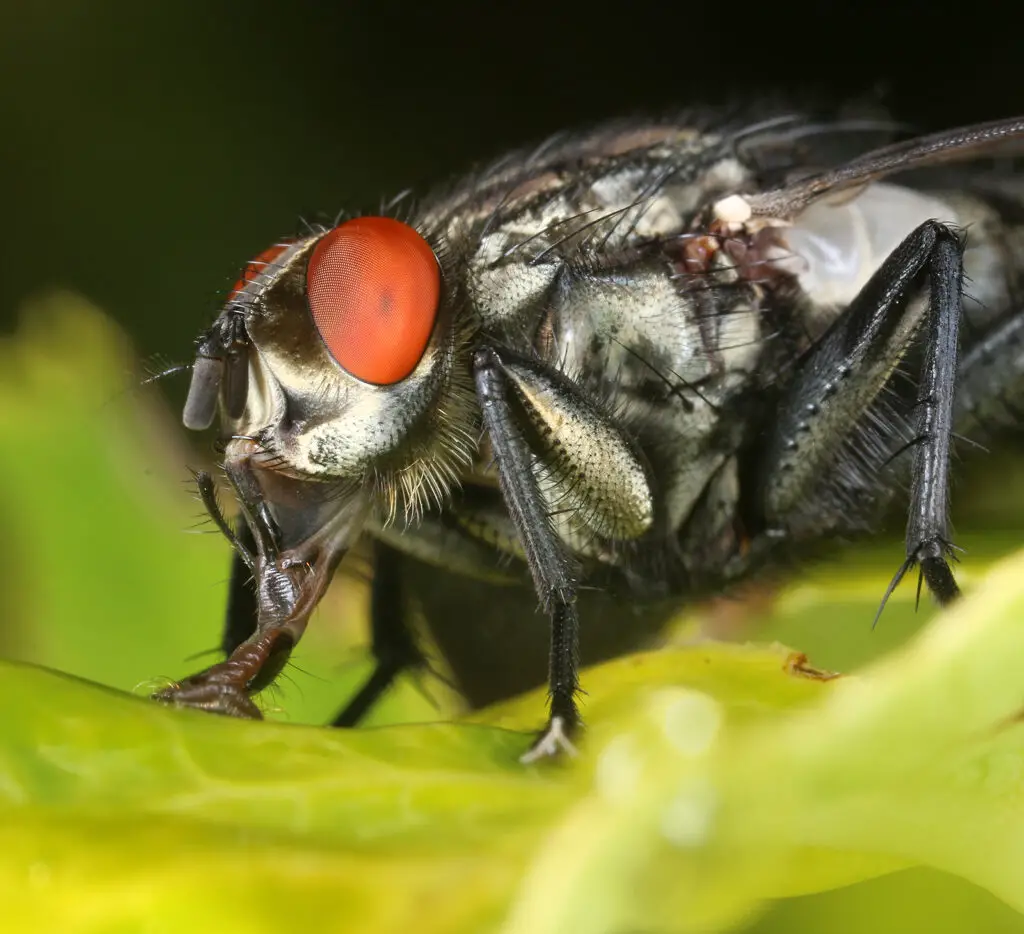
Flies are a common and persistent nuisance in many parts of the world. With over 120,000 species globally and 18,000 species in North America alone, these insects have a wide range of habitats and behaviors. Understanding where flies like to live can help in mitigating their impact on human lives and better prepare for controlling their populations when necessary.
Found both indoors and outdoors, houseflies are known to congregate around trash bins, pet food dishes, bushes, fences, and animal feces, to name a few common haunts. In addition to the housefly, many other fly species adapt to different habitats, having developed specific behaviors and preferences for their survival and reproduction.
Common Types of Flies
Flies are insects from the order Diptera, which encompasses over 120,000 different species. These insects are typically small and have soft bodies. In this section, we will discuss some common types of flies and their habitats.
Houseflies are among the most recognized and commonly found flies. They can be found in a variety of environments, usually near human dwellings, garbage, and animal waste. Houseflies play an important role in breaking down and recycling organic waste but are also infamous for transmitting disease.
The housefly is an example of one species that is typically found in close proximity to human settlements. Believed to have originated in the Middle East during the Cenozoic Era, the housefly has since spread worldwide, occupying a vast range of environments.
Black flies, also known as buffalo gnats and turkey gnats, are small, blood-sucking insects mainly found in the United States and Canada. They usually live near water sources and are found in wooded areas. Black flies can be a regional pest, with the state of Colorado being particularly affected by their presence (Green Nature).
Fruit flies are attracted to the fermentation process in rotting fruits, vegetables, and wine. They can be found in homes, restaurants, and other locations where food is present. It is important to properly store and dispose of food to prevent fruit fly infestations.
Other common types of flies include sand flies, snipe flies, and biting midge flies, which are typically regional pests. For example, Florida experiences issues with sand flies, while snipe flies, belonging to the family Rhagionidae, often inhabit wooded areas with water sources.
General Habitat Characteristics
Temperature and Climate
Flies are known for their adaptability and ability to inhabit diverse environments. They can be found in almost all climates, ranging from arid deserts to lush tropical rainforests. However, flies typically thrive in warmer and humid areas where the climate supports their lifecycle and reproduction. Humid habitats are often associated with higher fly populations due to the availability of damp places suitable for their larvae development (Animal Spot).
Availability of Food Sources
Flies are opportunistic feeders, consuming a wide variety of organic matter based on their surrounding environment. They can feed on decaying organic matter, nectar, blood, or even other insects. Due to their versatility in feeding habits, they can survive in numerous habitats with different food sources.
In aquatic habitats, some fly species, such as mosquitoes and midges, have adapted to feed on algae, aquatic plants, and other organic matter (AZ Animals). Their larvae are known to inhabit damp places, making these habitats perfect for their development and sustenance.
Flies can adapt to new or changing habitats as food sources become available, making them highly resilient to changes in their environment. Their ability to utilize various food sources contributes to their widespread distribution across different habitats.

Indoor Living Spaces
Flies, especially the common house flies, can infest many common indoor living spaces. There are certain locations within a home that are more likely to harbor these pests:
Kitchens and Dining Areas
Flies are naturally attracted to food sources, which is why kitchens and dining areas are some of their favorite indoor locations. They are drawn to the smell of food cooking or leftovers, and will use these areas as both breeding and feeding ground.
Bathrooms
Flies may also be found in bathrooms where they can find moisture and the organic material they need for sustenance. In these areas flies can breed and feed on decaying organic matter or even wet, dirty surfaces.
Garbage and Waste Disposal Sites
Flies are attracted to garbage and waste disposal sites, where they can easily find decaying organic matter to feed and breed. It is important to keep garbage bins clean and properly sealed to prevent attracting flies and other pests into your home.
Outdoor Living Spaces
Flies are highly adaptive and can live in various outdoor environments. Understanding their preferred habitats can help in managing and controlling their population.
Gardens and Compost Piles
Flies are attracted to gardens and compost piles due to the abundance of organic matter, moisture, and warmth. These areas provide an excellent breeding ground for flies, especially when decaying plant matter and food scraps are present. To discourage flies from breeding in your garden or compost pile, ensure to turn the compost regularly, cover food waste with a layer of soil, and dispose of garden waste properly.
Animal Habitats
Flies also thrive in areas where animals are present, including farms, pet areas, and stables. They feed on animal feces and can breed in manure piles. To reduce fly populations in these areas, clean up animal droppings regularly, maintain clean pet feeding areas, and cover manure piles with tarps or plastic sheets.
Rural vs Urban Areas
Both rural and urban areas can harbor flies, but the density and types of fly species may vary. In rural areas, flies can be abundant due to the presence of livestock, crop fields, and manure storage facilities. In urban settings, flies are more likely to be found near garbage bins, dumpsters, and other areas with accumulated waste.
Maintaining cleanliness and eliminating potential breeding sites are essential strategies for controlling flies in both rural and urban environments. By doing so, the risk of fly infestations and associated health issues can be minimized.
Life Cycle of Flies in Their Habitat
The life cycle of a fly is comprised of four stages: egg, larva, pupa, and adult.
Egg Stage
When a fertilized female fly finds a suitable location, she will lay her eggs, usually in material that the larvae will consume upon hatching from the eggs. The ideal habitat for eggs is typically in decaying organic material, ensuring proper nutrition for the forthcoming larvae (Orkin).
Larvae Stage
The larvae, commonly known as maggots, hatch from the eggs and immediately begin to consume their surrounding organic material. Maggots are equipped with mouth hooks, which aid them in raking decaying flesh and plant material into their mouths (Australian Museum).
Pupa Stage
Once the larvae have completed their development, they enter the pupa stage. During this stage, they reside inside a protective envelope, or cocoon, where they go through metamorphosis to become adult flies. This phase typically lasts 7 to 10 days (Animal Hype).
Adult Stage
Upon emerging from their cocoons, adult flies are now able to fly and reproduce. Adult house flies usually have a lifespan of 15 to 25 days, though they can live longer in cooler climates. During this time they continue to inhabit and reproduce in areas rich in decaying organic material.
Prevention and Control Methods
Effective prevention and control of flies involve understanding their life cycle and targeting their preferred habitats. The University of California’s Department for Agriculture and Natural Resources has identified a primary method of suppressing fly populations, which is to eliminate their larval habitats and thereby disrupt their life cycle.
Here are some essential methods for controlling flies:
- Sanitation: Maintain cleanliness in and around the home, particularly in areas such as kitchens, garbage disposal units, and pet areas. Properly clean up and dispose of food waste, and keep trash containers sealed. Good sanitation practices can help prevent the breeding and growth of flies.
- Physical Removal: Use fly swatters or sticky tapes to capture and eliminate flies that have already entered your home. These methods are suitable for the occasional fly elimination.
- Exclusion: Install window and door screens to prevent flies from entering your home. Be sure to keep all window and door screens in good repair to block access points for flies.
- Chemical Control: If necessary, use insecticides in combination with other methods to control fly populations. Be sure to read and follow the instructions on the insecticide label and consult with a professional if necessary.
In warm weather, the house fly’s life cycle can be as short as eight days from egg to adult, so timely and consistent application of these prevention and control methods is crucial to keeping fly populations in check.
Good luck!
Driven by a passion for those tiny creatures that rule our world, we at Bug Domain strive to be your go-to resource for information on insects.



